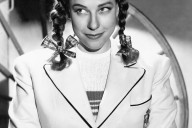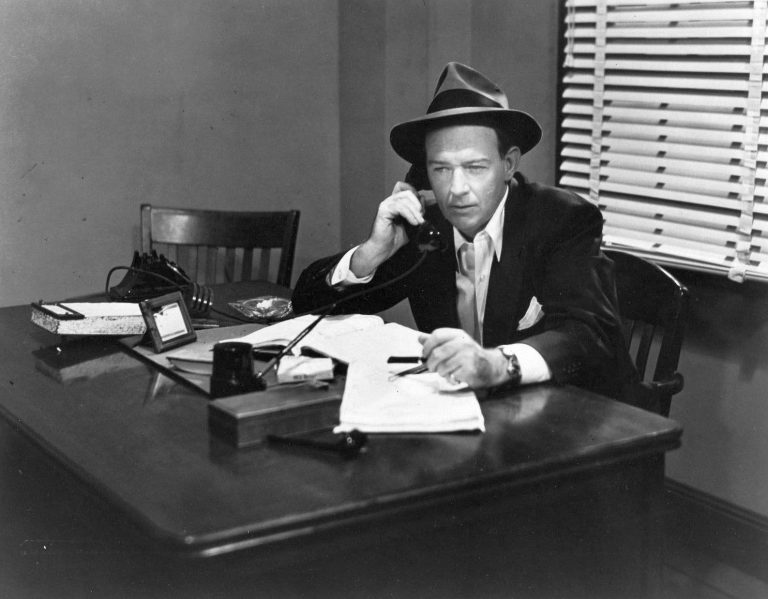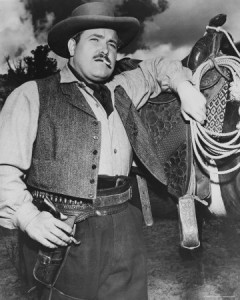By Elizabeth McLeod
He was the most popular member of Jack Benny’s supporting cast. He was a fixture of American popular culture for more than thirty years. He was one of the wealthiest African-Americans of his generation. And, he was a pioneer in promoting racially-integrated employment in the United States defense industry. He was Eddie “Rochester” Anderson, a man of many accomplishments who is practically unknown to anyone under the age of forty-five…unless they happen to be Old Time Radio enthusiasts.
Eddie Anderson never set out in life to be a pioneer in anything. All he ever wanted to do was entertain, and that was an ambition he came by naturally. His parents had greasepaint in their blood — his father was a minstrel-show comedian of many years’ experience, while his mother was a circus acrobat, specializing in tight-wire tricks. Even his older brother Cornelius earned his show-biz spurs as a singing comedian. Eddie might have thought about being a singer himself, had he not sprung his larynx as a loud-shouting newsboy, scarring his voice for life with an unforgettable wheezing rasp. But, Eddie could dance, and he soon discovered that he could leverage his defective voice for laughs — even the moldiest of jokes took on a certain freshness when brayed out in Eddie’s buzzsaw tenor.
By the middle of the 1930’s, Eddie Anderson was a fixture on the nation’s theatre screens, in bit roles and in the occasional featured part. His gin-smuggling impression of the biblical Noah was the hit of 1936’s The Green Pastures, and he capped his success in that film with a hilarious walk-on role as a sarcastic railroad redcap on Jack Benny’s radio program in the spring of 1937. That part led Anderson to a regular role on the Benny broadcast, and eventually to his full membership in Jack’s “gang.” As the bumptious valet Rochester Van Jones, he became a national favorite in the early 1940’s, as popular with black audiences as he was with whites.
Jack Benny paid his cast well, and soon Eddie Anderson was earning a wage suited to one of the nation’s most popular entertainers. He indulged in the sort of flashy show-biz habits that one might expect of a celebrity of his stature — the big house, the fancy cars, a yacht, and even a thoroughbred race horse. But, he wasn’t a spendthrift by any means — Eddie Anderson had sound business sense, and he invested most of his money in real estate, creating the nucleus of a substantial personal fortune. By the time the U.S. entered the Second World War, Anderson was sitting on a comfortable pile of cash, and looking to do something meaningful with it. He bought War Bonds, but he wanted to do more. He was too old to serve in combat, but he gave freely to every bond-selling and USO campaign that asked for his help, he toured military bases at home and overseas, and he was a frequent contributor to Armed Forces Radio Service broadcasts. But he wanted to do more.
He got his opportunity in 1942, thanks to a man named Howard “Skippy” Smith, a man with some impressive accomplishments of his own. Smith was a skillful, rather flamboyant aviator at a time when few African-Americans held pilots’ licenses. He made a name for himself as a daredevil, appearing regularly in the Hollywood Airshow as a death-defying skydiver. It was his business to know everything there was to know about parachutes — and it happened that, with the coming of the war, knowledge about parachutes suddenly became an extremely valuable commodity. Skippy Smith was ready, willing, and able to put that knowledge at Uncle Sam’s disposal – but, the life of an airborne stuntman wasn’t especially lucrative. As a show-business figure himself, however, he did happen to know Eddie Anderson — who agreed to bankroll Smith’s plan to open a new parachute factory in San Diego.
With Smith’s know-how and Eddie Anderson’s money its prime assets, the Pacific Parachute Company opened in March of 1942. The new firm occupied a spanking new building, and there was something else new about it: its workforce was racially integrated. This was a requirement for any plant expecting to do business with the Government, thanks to the Fair Employment Act signed into law by President Franklin D. Roosevelt the previous summer. But, even with the new law on the books, San Diego remained one of the more racially-retrograde cities on the West Coast, and the idea of whites and blacks working side by side was a concept that left many residents far from comfortable. When the plant opened, newspaper accounts specifically mentioned that the initial workforce consisted of “twenty white and colored girls,” most of whom had been trained as seamstresses in a New Deal program administered by the National Youth Administration. That number would quickly increase and, for the duration of the war, the plant would boast a racially-mixed workforce.
Pacific Parachute acted as a subcontractor to the famous Standard Parachute Company, specializing in the assembly and stitching of parachutes from narrow pie-shaped segments of silk fabric. As the war progressed, an impressive array of sewing machines hummed busily on the factory floor, with nearly a hundred women working side by side — about one-third white, one-third black, and one-third Mexican — all pitching in to get the job done. African-Americans served as plant superintendent, factory foremen, and office administrators, and for the entire duration of the war, there were no reported racial incidents. “I must admit that racial tolerance was a problem with me at first,” admitted one white employee, a woman from Missouri. “But working at Pacific has actually made me a different person. I wouldn’t have missed the experience for anything.” Pacific Parachute became a favorite example in the popular media of how “people of all races can to pull together for Victory.” In 1943, Smith and Anderson were cited by the National Negro Business League as the owners of the outstanding black-owned business in America. As the war progressed, the firm moved from subcontracting to working under direct defense contracts of its own, and was cited by the National Commission on Interracial Cooperation as a prime example of real Americanism in action.
Racial idealism aside, life wasn’t perfect at Pacific Parachute. The work was tough and arduous, and when several women attempted to organize the workers into a union, Skippy Smith had them fired — only to run afoul of the National Labor Relations Board, which ordered him to reinstate the organizers with full back pay. But, the publicity connected with the factory being “Rochester’s parachute plant” was always good for a story in the popular press. Employees took a great deal of pride in what they did, how they did it, and for whom they worked. Pacific Parachute’s fame spread far from San Diego — the plant was featured in Life magazine, the workers were photographed by the Office of War Information in a series of vivid pictures which have come to epitomize the “Rosie the Riveter” image of the female war worker, and Pacific was even featured in the New York-based civil rights radio series “New World A’ Comin’,” complete with a not-altogether-impressive actor impersonating Eddie Anderson.
The plant celebrated its first anniversary in 1943 with a gala presentation hosted by Rochester himself. Eddie Anderson was joined on stage by San Diego city dignitaries, high-ranking Army and Navy officers, and a two-foot high trophy presented by the San Diego Merchants and Manufacturers Association praising the plant for its achievements in manufacturing and in the promotion of racial understanding. It was one of the proudest moments in Eddie Anderson’s life.
The end of the war meant the end of Pacific Parachute, but not its legacy. The original plant built by Skippy Smith with Eddie Anderson’s money still stands on Eighth Avenue in San Diego, and surviving veterans of its sewing floor still take great pride in their wartime achievements — both for what they did to keep American paratroopers safe and for what they accomplished fighting for freedom on the Home Front. Eddie Anderson accomplished a great deal himself over the course of his life, but none of those accomplishments meant more to America than the pioneering Pacific Parachute Company.
Copyright 2012 Elizabeth McLeod and RSPT LLC. All rights reserved.














